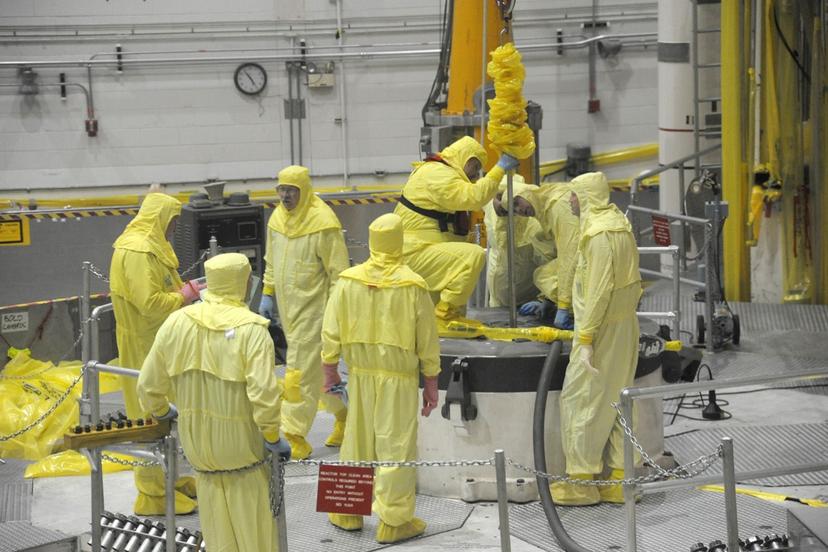Nuclear Power

Industry Outlook
Few U.S. baseload (nuclear or coal) power plants have been built since 1980. This is in part because many companies have restricted construction to peaking plants, small facilities, usually natural gas- or oil-fired, that are quick to turn on and off according to swings in demand.
According to the Nuclear Energy Institute (NEI), the United States will need 28 percent more electricity by 2050, which will increase the importance of nuclear reactors in the energy mix. There are two new nuclear reactors under construction in the U.S., and the Nuclear Regulatory Commission is currently reviewing applications for new reactor designs. Popular support for nuclear energy remains strong in the United States. A 2016 poll (the most recent data provided) by the NEI found that 84 percent of Americans believe nuclear power is an important part of the nation's energy future; this was a 4 percent increase compared to 2015 findings. Sixty-five percent expressed support for nuclear energy, and 82 percent agree that we should take advantage of all low-carbon energy sources, including nuclear. Support for nuclear energy suggests a strong outlook for the future.
The coronavirus pandemic disrupted many industries around the world in 2020. Business lockdowns and social distancing requirements caused an economic slowdown. Nuclear employees were considered to be essential workers in many countries because of the importance of maintaining infrastructure during the pandemic. In the U.S., nuclear plant, supply chain, fuel services, and outage support personnel were identified as essential workers in the critical infrastructure designation. According to the World Nuclear Association, nuclear energy supplies about 10 percent of electricity globally and contributes to the generation of electricity in more than 30 countries. Early in the pandemic, some nuclear power plants experienced extended outages due to workers becoming ill with COVID-19, according to an International Association for Energy Economics article. However, this "supply-side impact" was expected to be short term, particularly due to the accelerated rollout of the COVID-19 vaccine in 2021. Nuclear reactor operators have followed the safety protocols to protect workers while ensuring the continual functioning of key business activities. In addition, nuclear technologies are being used to detect and fight the virus.
As of February 2021, the U.S. nuclear power industry consisted of 200 businesses with total employment of 44,315 people. The research group IBISWorld predicts average growth in this industry from 2021 through 2026, as the economy recovers after the pandemic. The consumption of electricity is expected to increase as offices and industrial plants become operational again. On the other hand, though, the Energy Information Administration foresees a decline in overall generation from nuclear facilities during this time frame. "This decline in net generation is due to nuclear plants being decommissioned and no new facilities being built." Moving forward, there will be a shift in demand toward solar and wind energy generation.
The U.S. Department of Energy has conducted scientific studies of Yucca Mountain, Nevada, as the site for a proposed U.S. repository for high-level radioactive waste. In 2002, President George W. Bush signed a resolution that would eventually make Yucca Mountain a permanent repository. The Obama administration declared that Yucca Mountain should be withdrawn from use as a nuclear storage site in 2009 and another solution found, and federal funding for the site ended in April 2011. Lawsuits followed from states suing to continue use of the facility as part of their clean-up and waste management efforts. In February 2020, the status of the Yucca Mountain project remained uncertain because the former administration had reversed its prior support for this proposed national nuclear waste site.
Since accidents at Three Mile Island in 1979, Chernobyl in 1986, and Fukushima in 2011, the public remains concerned over the safety of nuclear reactors. The nuclear industry and the federal government are developing standardized designs for nuclear power plants to make them safer, more efficient, and cost competitive with other electricity-generating plants. More effort is also being concentrated on the development of renewable resources for energy, such as solar and wind power.
The U.S. Bureau of Labor Statistics predicts employment growth in this industry for power plant operators, distributors, and dispatchers will experience an employment decline of about 6 percent through 2028, due primarily to technology advances and improved energy efficiency in homes and businesses reducing energy demands. Employment opportunities are projected to show little or no change for nuclear engineers and technicians during this same time period. Employment in many of the industries that employ nuclear engineers are projected to decline, including research and development, electric power distribution and the federal government. Those with relevant work experience and strong technical and mechanical skills will have improved chances of finding work.
